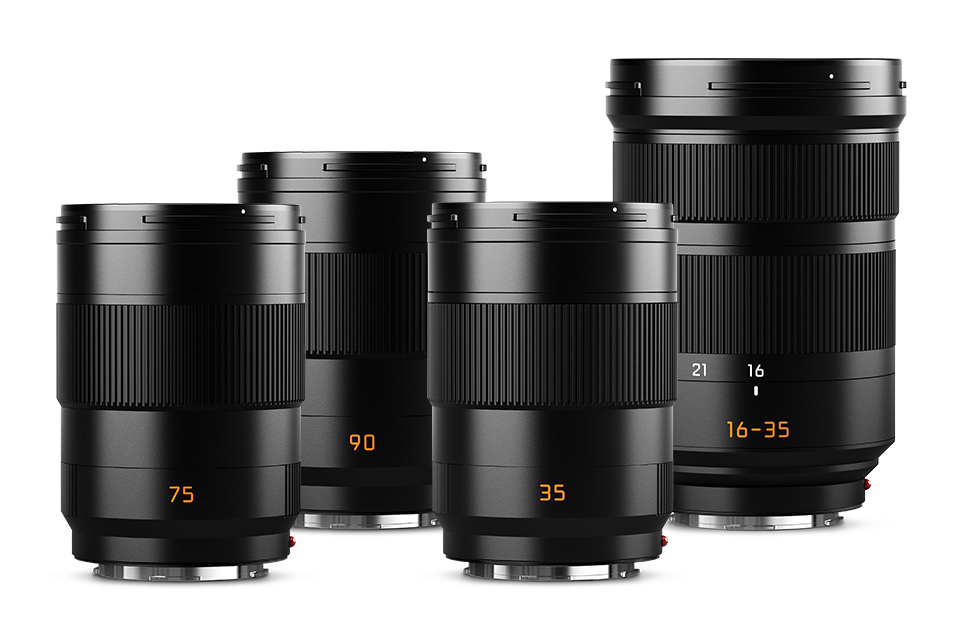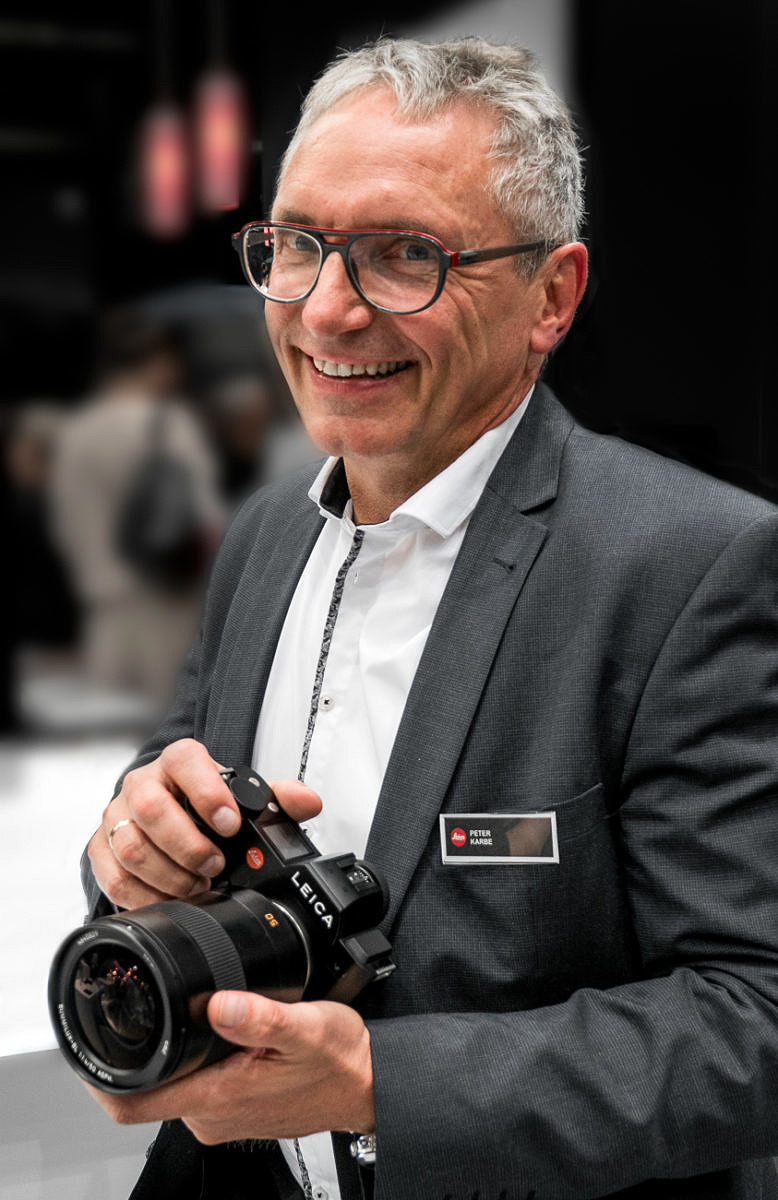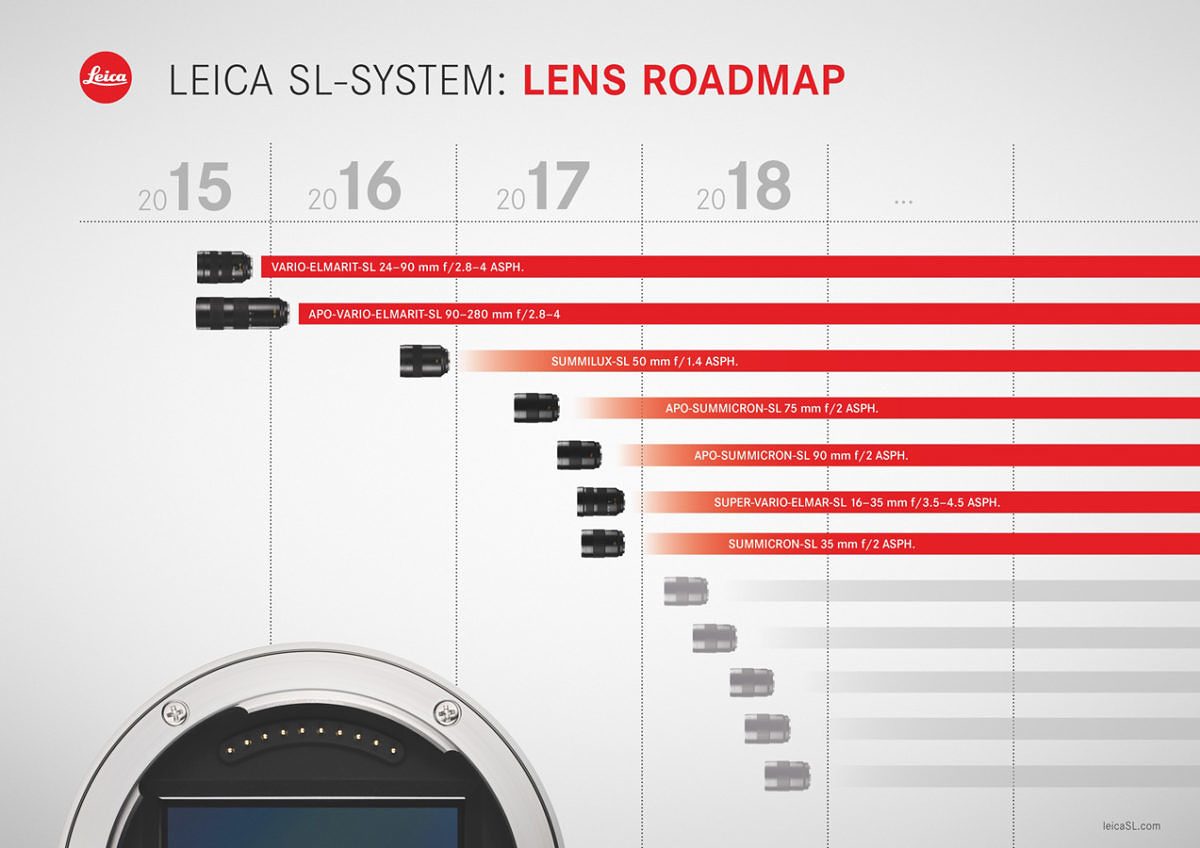When I showed up for my meeting with Steffen Skopp, the product manager of the SL System, he greeted me and said, “I hope you don't mind, but I invited Peter Karbe to join us for our discussion.” How could I possibly mind? Peter Karbe is the head of optics at Leica. He's designed such incredible lenses as the 50mm APO and 75mm APO, among many, many others. Ever since he pulled me aside and gave me an education in lens design back at Photokina in 2008, we've had numerous conversations over the years. I even got to go out shooting with him to try out the first M Monochrom. Every time I listen to Peter I learn something new. So, no, I didn't mind him joining us to discuss the new SL lenses.
After some catching up and pleasantries, we got down to the matter at hand.
DF: So, jumping right in, how good are these new prime lenses, the 35, 75 and 90 Summicrons that will be coming out over the next year?
PK: These primes redefine everything. They are simply amazing in terms of total optical performance, as well as mechanical. Fast autofocus. Next level image quality.
Next level? The SL zoom lenses are already incredible. They are probably the best zooms I have ever used, at least as good as the best Leica primes. Are we looking at similar quality with the new Summicron-SL lenses?
Better. The SL zooms are already very, very good, with prime lens quality. Now, we raise the bar for prime lens performance. You have not seen a look like this before.
When you talk about a new look, are we talking about sharpness, bokeh, or something else?
Yes, both of those. The sharpness DOF curve, which you can visualize as a parabola, has been changed from what you have seen in the past. We’ve tightened and raised the curve, so that f/2 will offer a look that is similar to f/1.4. It is very unique and special. And, at the same time, will offer greater sharpness at the point of focus. The contrast of in focus and out of focus will be more pronounced, which produces a very 3D effect.
Okay. Let me get this straight. You're able to offer an f/1.4 look at f/2 and even higher resolving power?
Yes. The Summicron-SL lenses employ a new generation of optical design, lens technologies and manufacturing processes.
We started with the APS lenses, T and X series lenses, redefining our performance goals, which we now take forward with the SL lenses. We also see this in the Q Summilux 28mm and more recent M lenses like the 50mm APO-Summicron. These were very important steps for us, but with the new SL lenses, we have taken a really big jump.
So, the SL lens designs go even further than reference designs like the 50mm APO? How did you do this?
By implementing many small steps, but everywhere, they add up to a lot in the end. We had a plan of what we wanted to do for a while now, but from the start, we needed to create a process that was achievable. We needed to know that we are able to keep such a consistent quality and performance level at even higher tolerances than before. This involved changes to almost every aspect of the design and manufacturing process.
What kind of changes? Leica is already recognized as having some of the best lenses across the board.
Yes, but we felt that we need to continually improve. We must always try to push what is possible.
As far as changes, we've slightly improved lens coatings and internal baffling to keep stray light and internal reflections to an absolute minimum. This increases contrast in critical lighting situations. We made important upgrades to our in-house computer aided optical design, modeling and simulation software. We needed to create new methods of measuring and testing to allow for higher manufacturing precision of optical elements, which is also done entirely in-house. This encompasses both new hardware and software. We started looking at entirely new optical designs that wouldn't have been possible without important advances in electro-mechanics. Lens assembly has to be tighter tolerances. We also use our existing expertise with exotic glass types to create new combinations. And with more elements, we must be very precise with alignment and centering. Again, the tolerances must be reduced.
Sounds like quite a lot went into the effort.
Yes. It has taken us years to fully realize the potential of all of these changes, and at great cost.
What about the 16-35mm f/3.5-4.5 wide angle zoom? How will this compare to the other two zooms?
Same level of performance.
Why didn't you make this an f/2.8 lens with constant aperture?
The lens would have been much too large. We decided to focus on performance and keeping the size down.
The new Summicrons are much smaller than the zooms or the 50mm Summilux. I assume this was done deliberately?
Of course. Size was an important factor. We heard feedback from SL users that they wanted smaller lenses than what the Vario lenses offered. So, we shift our focus now to the Summicron-SL lenses. They are really quite compact, all with 67mm front diameters.
The three Summicrons look almost identical. Was this just for the sake of showing some mock-ups for Photokina?
Actually, the 35, 75 and 90 all share the same outer lens barrel, as well as other internal components. This helps in manufacturing and maintaining consistency in the set. The mock-ups you see on display are the final designs. This will not change.
You've told me before that you are now testing TL lenses to 60 lp/mm even though the published MTF charts still only show 40 lp/mm. Is it the same with new SL lenses?
Yes, this started with the TL lenses and was part of the move to this next level we are now realizing with the SL primes.
Also, when you look at the MTF curves of all Leica lenses, you should realize that they are published to show performance without in-camera corrections. In practice, on the SL, there are corrections automatically applied to both DNG and JPG.
So corrections are baked into the DNG files before software processing?
Yes. In fact, the correction is also applied in live view operation. The Maestro II processor performs this in real time for video. Same for M lenses. Chromatic distortion is removed. This is very import for video where doing corrections in post production is much more difficult than for still images. As well, it lets the photographer or videographer see the final image result beforehand.
Well, judging by the published MTF charts, the SL lenses don't seem to need much correction.
No. They are already quite excellent, with our new designs resolving over 70% contrast wide-open. But, if the technology is available to achieve even a very small improvement in performance, we will use it.
For the new prime lenses, are you still using the linear stepper motors like in the SL zoom lenses?
Yes. We still use linear stepper motors for focus. Ultrasonic motors do not offer enough accuracy or speed for contrast detect AF. They are more useful for phase detect AF systems, but still not as precise as stepper motors.
We also look for ways to create ultra-light internal autofocus lens groups in order to make focus as quick as possible. But the challenge is to maintain performance from close focus to infinity. This is always a primary goal for us, while keeping focus very quick and precise. We think we've achieved this with the SL primes, just as we were able to with the first two zoom lenses.
In one of our previous meetings, you told me a little about how the optics department approaches lens design, and that you have moved away from a lens designer for each project and instead moved to a team approach. How does this work?
Traditionally, Leica is an optical mechanical company. But today, we need to combine more closely all the technologies so that we can come up with solution. From the start of each lens design, we must figure out the best way to assemble. We've found the best way to do this is with a collaborative team approach from the start.
Each design team is comprised of a mechanical engineer, an industrial engineer, an electrical engineer, and a couple optical designers. On the the optics side, we try to combine more experienced designers with those with a fresh perspective. This provides a balance of experience and new ideas to find new ways to achieve the design challenges that we create for ourselves. This is how we are able to get from one level to the next, like we have seen with the SL lenses. It is really a collaboration and team effort.
For me, leading the optics department, it’s really good to see how the whole optics team is performing. We continue to improve and set new standards.
After these next five lenses, what can we expect?
If you look at the lens roadmap we released, you might see some other things at the bottom of the chart.
So, will we see more Summicrons with this same next-level performance?
The Summicrons were conceptualized as a set….. We will have to wait and see. (smiles)
After our interview, I also had a chance to see some early sample images from a prototype 75 APO Summicron SL. Granted, they were small JPGs on an iPad, but let's just say that I was thoroughly impressed. Just as Peter had said, the look of the files was different than I had seen before. Honestly, it's one that's challenging to describe. For me, the 75 SL results evoked feelings of the 120 APO-Macro-S, one of my all-time favorite lenses, with tack sharp details and creamy transitions to out of focus areas. But the look was different. I'll have to leave it at that until I can shoot the lens and process some DNG files myself.
For those concerned with Leica skipping Luxes in favor of rolling out a set of Crons…don't be. Prepare to be floored by theses lenses. Just from the handful of samples I looked at, the results were insanely sharp wide open with absolutely wonderful, beautiful bokeh. And putting that performance level in a smaller, lighter and more compact package, the new Summicron SLs should hit all the right notes for a lot of SL photographers.




David,
Nice report as always.
You mentioned the S120 being a favorite lens and the SL75 being your next favorite but different a bit.
I recall the S lenses were designed for handling resolution increases of a factor of two. Sounds like SL may be there too?
Would you be able to say that S lenses are still better than SL, or SL lenses are as good as S. Or will we see a step up in newer S lenses in the future?
Jack,
Thanks.
I can’t say that the 75 APO SL is a favorite just yet. I haven’t shot with it. I just said that the look reminds me of the 120 S, which you already know is a favorite of mine.
The S lenses are incredible for sure. There’s no doubt about that. But…. it would seem that the SL lenses are the next step. If and when Leica increases resolution for either system, I think the lenses will be able to handle the added demand easily. Both the S and SL optics are able capable of more.
So does that mean the SL lenses could handle a medium format sensor? That would be quite interesting!
Nope. The SL lenses are 35mm only.
For medium format, Leica has the S System, which has incredible lenses.
Hi David, which lens/camera did you use to take photo of peter Karbe Holding Leica Sl with 1.4 Lens.
Thanks,
Sami
D-Lux 109. I wish I had taken the extra time to grab the SL and the new 50 Lux, but Peter needed to go to his next appointment.
I doubt the image circle of the SL lenses would be big enough to cover the larger sensor.
Did you get an explanation of how the different DOF rolloff that makes f/2 have the same feeling as an f/1.4 shows up in the MTF’s (or does it?). And how are corrections for distortion and LCA “baked into the DNG”? DNG1.4 (used in the SL but not in the M240) has a place for these parameters, and they show up in files from the SL zooms and some of the supported R zooms and wide angles. Is there more going on? Are the corrections applied to the JPGs in camera the same as those passed in the DNG files?
Karbe, as a justifiably proud engineer and designer, seems more open than the typical Leica exec, so maybe he can give us more insight into what makes these lenses so special.
I enjoyed listening to Peter Karbe as he gave us a 75 minute presentation on the history of Leica optics in Wetzlar.
The new SL 50 looks heavy. I assume no OIS as in the zooms? Did you get a sense of the weight of the 35? I worry about hand-holding these lenses on the SL. Thanks.
The 50 Lux SL is somewhat large, but not especially heavy. It balances really nicely with the SL. The Summicron SL lenses at the show were just design mock-ups – no glass inside. But, they will certainly be smaller and lighter than either the zooms or the 50 Lux.